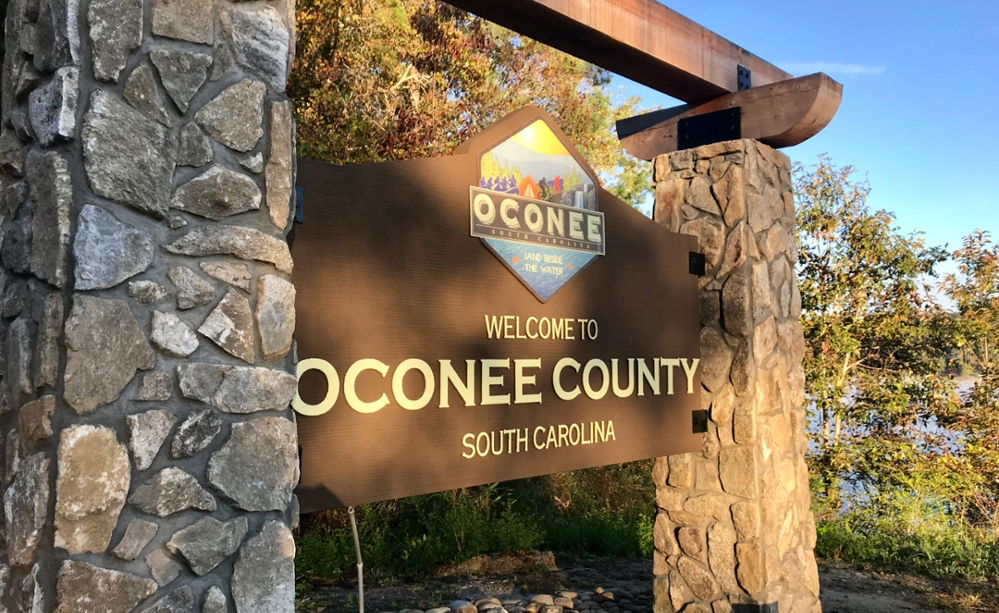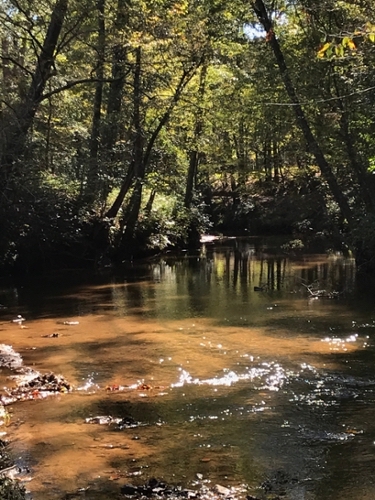Cane and Little Cane Creek Watershed Plan
Cane and Little Cane Creeks reside wholly in Oconee County in the South Carolina foothills. The county welcomes visitors and residents with its tag line of “Land Beside the Water.” The Cherokee word for this phrase is Oconee. And what better way to consider watershed management as just that, managing land beside the water?
A watershed management plan first and foremost recognizes the land users and land uses in the watershed. The Cane Creek Watershed, with Little Cane Creek as tributary, is a 30-square mile watershed, coming together as Cane Creek, and flowing wide and slow as it enters Lake Keowee. The Cane Creek Watershed is 15 square miles. The Little Cane Creek Watershed is 14 square miles.
Watershed Management Plan (PDF)
-
Strategies to Better Manage Bacteria Loading in the Watershed
The most significant project recommended in this plan is an overhaul of how water is managed in and around Sertoma Field, the most popular park site in the area. This large, multi-partner effort should include replacement of sewer infrastructure while porous pavement solutions are implemented, as well as a naturalization of the unnamed tributary that carries runoff to Cane Creek, among other projects. It is the most visible of projects to send a message to the community that ecosystem protection is vital to their quality of life, will provide opportunities to engage residents in restoration and education, and address significant shortcomings of the wastewater system to allow for more volume and less fecal pollution risk to waterways.
The plan also presents significant grassroot opportunities to engage large landowners in stabilizing their riparian corridors through tree plantings. Bank loss, sediment deposition, and less access to the floodplain is preventing the degradation of existing bacteria in surface waters. Most especially in the lower parts of the watershed, this is an opportunity to bring large native trees back to the river’s floodplains and provide long-term benefits to water quality, ecosystem heath, and biodiversity. An additional step in this riparian reforestation strategy is bringing back natural flow and flushing mechanism of the stream, restoring balance to flow and sediment.

Additional projects identified as addressing existing sources of bacteria loading to Cane Creek include:
- Repair of septic systems and sewer tie-in to those failing systems where sewer is available;
- Regional policy development to incorporate grease interceptors at the single point of discharge from buildings where this is a documented and frequent occurrence;
- Catch basin maintenance;
- Trapping of wild pigs in the area;
- Improved buffers around pastures and paddocks.
- Lot scale BMPs and stormwater conveyance retrofits.
-
A Call to Leadership
The stakeholders of the Cane Creek Watershed have the potential to ask for greater protection of their livelihood, so critically linked to healthy waterways and healthy environment. This message of Better and More Planning to those decision-makes includes mandatory changes to the handling of sewage and a mandate to tie into sewer in new homes and developments where sewer exists; planning for conservation corridors and stream buffer protection, improved maintenance of stormwater infrastructure where it exists and a requirement to consider Green Infrastructure in areas of growth.
As with all Watershed Management Plans, this Plan should be considered fluid and subject to change as land use changes occur in the watershed. Though the project team has outlined priorities for implementation, these may change, as the watershed is dynamic. The implementation of this plan is more than any one agency can do; therefore, it is recommended that Oconee County hire a full-time Watershed Planner that can work amongst the county and towns, in partnership with the utilities of the region. With more watershed plans in place, the county will be prepared to apply for more implementation funds, while overseeing the implementation of this first plan. There are significant grants available to communities who want to plan and provide healthier environments for schools, parks, and their downtowns. Money is also available for small, growing communities to update sewer and water infrastructure. Additionally, a Watershed Planner will help to prepare the area and the contractors that work in the area for the Municipal Separate Storm Sewer System (MS4) permit that will eventually be required in urban areas of the county. These are proactive watershed management steps that will help to protect and manage the natural resources that have been the history of the area, protected for the future of the area.
-
Support
Support for this project was provided by Friends of Lake Keowee Society, funded by SC Dept. of Health & Environmental Control.
With thanks to the many stakeholders, most especially, FOLKS, Clemson Extension in Oconee County, City of Walhalla, the local utilities of the region, and NRCS.
Download the Watershed Management Plan (PDF) (completed Sept. 2018)
